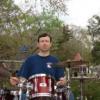
Posted
"The current solution is fine for orchestral music, jazz trios and similar styles. Fortunately, these are also the styles where Synfire offers the greatest benefit and expressive power. These composers set up a huge rack of sounds in advance and then just use it for all projects. This does not work that well for other styles."
This was posted by Andre/Cognitone in response to the possibility of "wave" files being used within Synfire and it brings up a question for me.
I am a Pop/Rock/Country songwriter and am looking forward to the release of Synfire. Why do you say it isn't as supportive to other styles other than the above mentioned? I would want to build big racks of sound/sonic instruments also, from my VI libraries to accommodate creative use of the sonic palette as I construct songs. I would import midi files from those music formats (country, rock, etc.) to approximate some interesting grooves and utilize figure and phrases I find interesting in those music formats. Are you implying that the pattern recognition engine in Synfire does not do as well as it does in the other genres of jazz, symphonic, etc.?
I'm hoping that Andre or other Cognitone expert can answer this...
Thanks!
So., 23.01.2011 - 19:26 Permalink
Hi David,
I'm by no means an expert or even close when it comes to Synfire but I can tell you this: Andre listens, and implements ideas. He is aware that Synfire is being used for more than orchestral music and I have complete faith that he is working on making Synfire an even more powerful compositional tool that will be useful for all types of music. I'm sure he'll tell you that himself shortly.
Take care:)
So., 23.01.2011 - 19:42 Permalink
Thank you Fent. I read alot more posts last night and see the high interactive environment here. It's really encouraging how much they encourage feedback and questions to keep the software designers on their toes and responsive to their market buyers.I also see now that they are really trying to implement some ideas around user friendly tools and ergonomics to please all formats. Thanks!
David
So., 23.01.2011 - 21:11 Permalink
The quote you cited refers to the use of virtual instrument plugins with Synfire. It is currently easier to handle if you have a lot of sounds that you can share among many projects, so you dont need to setup a new rack for each. Apart from that, the inner mechanics and the user interface of Synfire is great for all styles of music.
With full VST/AU support already appearing at the horizon, this will no longer be an issue for a long time anyway.
Andre recently noted that pure Rock music heavily depends on guitars and real people performing it (and I could not agree more), so midi synths possibly can not convey it anyway. Although this does not mean you can not use Synfire to write cool rock songs and later perform them with our band.
So., 06.03.2011 - 18:56 Permalink
I see no reason why Synfire wouldn't excell at pop music. Have you checked out the Yamaha motif series, or the Virtual instrumentI, real guitar? These us 'XG' midi format that implement a system of using octaves 6 - 8 to produce string slide, pops, fret noises etc. They also make use of velocity to individual notes to add glissandos, slides, harmonics.
To implement this with Synfire, you will need a XG instrument or Real-guitar. All you need to do is set up a 2nd instance of one of instruments ( I use RealGuitar and a Yamaha Tyros). For XG instruments, n the first track sends the midi notes for guitar pitches, on the 2nd track send MIDI that is in octave 6 - 8. Use this as a static imput (treat like a drum track). Add some vibrato, and pitch bend and you can have a screaming killer guitar.
On RealGuitar, the first track blocks out chords, the 2nd track consists of notes in the C -1 to C 0 range and also up in C 7 - C 8 range. Note that Real guitar uses a a slightly different approach, you must indicidually tailor a midi file to be used on one particual instrumet. The high and low octaves in real guitar trigger the rhythm pattern, guitar picking, strumming, etc. Again you would import this 2nd track as a static 'drum instrument'. I often take a drum part, hats, toms, cymbals, transpose to proper octave, thin and I have a unique patterns of pops, scratches,
Spectrasonic's Trillian also uses a similar approach, low notes to change instrument patch, etc. Again this will need individual messaging to get desired results. You might save this work to do in your DAW, but you could also try it in Synfire.
Look into Yamaha .sty files or Band in a box .sty files. These are short midi files that consist of several 1 - 4 bars. A style will contain up to 8 instruments. There will up ro 14 sections, each labeled with a marker, that will displayed when Synfire imports it. The more creative yamaha s tyles use XG format. To get full benefit you will need an instrument that reads these patches (other wise you lose the top octave sound effects.
You can cull lots of patterns, to use in your rock/pop creation.
Mo., 07.03.2011 - 02:51 Permalink
markstyles -
Thank you very much for the detailed descriptions of utilization on pop/rock formats. I am buying the Music Lab Real Guitar pack of the Acoustic, Les Paul and Strat to use with my MIDI controller keyboard - so hopefully, will be utilizing your suggestions to the max!
I don't have an XG instrument (and when I did an internet search - found that Yamaha has discontinued the format) so when you say "or Real Guitar" I believe you are referring to the MusicLab Real Guitar Virtual Instrument software as above, or are you referring to something else more hardware based? If a hardware XG Instrument controller is needed what items/models would you suggest?
Thanks for everything you suggested - it is very appreciated!
David
Mo., 07.03.2011 - 03:03 Permalink
duderanch -
Thank you very much for the comments. It's good to know users out there are using Synfire in a variety of formats. And thanks for the heads up on pumpaudio.com - what a cool site and service for placing songs! Can you give me some more specifics to your postings so I can go listen to some of the specific tracks you used Synfire on?
Again, thanks for the feedback.
David
Mo., 07.03.2011 - 04:02 Permalink
i recently submitted 10 tunes to pumpaudio.com for licensing. i used synfire heavily for these tracks. mainly R&B, Hip Hop/Pop type music. anytime you deal with chords/melody/harmony in any style Synfire is the ultimate tool. the ability to listen to diffenent progressions at the click of the mouse is close to priceless. it comes down to taking the time to learn the software and then producing for the genre.
Mo., 07.03.2011 - 04:09 Permalink
the tracks are waiting review. i dont have them on a site. here is one. all the music except drums and fx were prototyped in synfire.
Mo., 07.03.2011 - 06:57 Permalink
cant figure out how to upload mp3s here. here is another pop type tune using synfire and ableton live.
Mo., 07.03.2011 - 17:35 Permalink
XG came out in 90's as a response the growing number of sample players. The XG component added little samples to make the output sound more realistic. It has grown and evolved on it's own.
You want to finad an instrument that "responds" to XG MIDI It doesn't necessarily mean it's named with XG. The Motif series and Tyros synths both make use of do.
There are no hardware XG controllers per se. The XG components are generated by the style generation of Tyros, and the sequencers/arpeggittors of Motif.
Roland uses GS technology, similar results, Yamaha also uses SA and SA2 technology, again similar but more advanced. . You have to dig in and search out the various ways. I would imagine Korg has a similar technology. You have to search out
I"m only aware of RealGuitar, Trillian, that generate instrument artifacts via MIDI. You can use Kontakt voices by importing a MIDI file as a drum track and assign to same Kontakt voice to activate instrument changes.
I think the more we all search around, we might 'artifact generators' that are triggered by MIDI. I sometimes keep MIDI files just dedicated to that, and incorporate them with other instruments to get a more realistic sound.
Di., 08.03.2011 - 13:42 Permalink
I really like the solo that comes in at 40 seconds, it has a lot of energy, and keeps repeating on itself.
I too had trouble uploading a song here. I'd upload it and then it would disappear before I got to post message. I didn't understand the 'inline' thing. it seemed easier to upload to 'box' or a similar site, and then link it.
Perhaps someone could explain this fuller.
Mi., 09.03.2011 - 05:22 Permalink
Thanks again -
It's great to hear some cool tracks that were implemented from the ground up through synfire. I really like the solo and general feel of track one and the ambience for track two. Hope you get some action on pumpaudio!
Mi., 09.03.2011 - 22:20 Permalink
To upload MP3s, just add them as a file attachment. If you enable the "List" checkbox for the file, it will be listed for download. If you type Could not find [image 1] (for the first attachment) a Flash player will be shown for convenient playback.




